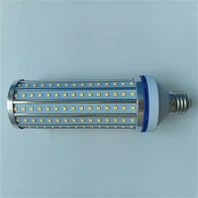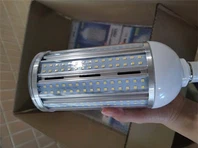It's possible that you've heard of the term "color temperature" before if you're looking to purchase LED lights. Your perception of the brightness and color of LED lights depends greatly on their color temperature. Finding the ideal lighting for your environment requires a thorough understanding of the color temperature range. We shall go into the definition of the color temperature scale, its operation, and the numerous uses for various color temperatures in this post.
Introduction LED lighting has transformed the lighting sector by offering durable and energy-efficient lighting options. However, choosing the best LED light for your area might be difficult given the wide variety of LED light options on the market. When buying LED lights, it's important to take the color temperature into account. The purpose of this page is to explain the color temperature scale, how it functions, and the numerous uses for different color temperatures.
WHAT IS THE SCALE OF COLOR TEMPERATURE?
The color temperature scale is a tool for determining how colored light sources seem. It represents the color of the light emitted from the light source and is measured in Kelvin (K). Warm hues like reddish-yellow and cold colors like blueish-white are on the color temperature scale.
BEING AWARENESS OF THE KELVIN SCALE
The color temperature of a light source is gauged using the Kelvin scale. It is between 1000K and 10,000K. Warmer colors are represented by Kelvin temperatures below, while cooler colors are represented by Kelvin temperatures above. The idea behind the Kelvin scale is that as an object's temperature rises, so does the color of the light it produces.
WHY ARE COLORS WARM?
Warm hues often have a reddish-yellow tone and are below 4000K. They are frequently utilized in places like living rooms, bedrooms, and restaurants where a nice and relaxing atmosphere is required. Warm hues are also excellent for accent lighting, which is used to emphasize architectural details and works of art.
WHICH COLORS ARE COOL?
Cool hues often have a bluish-white tone and are over 4000K. They are frequently utilized in places like workplaces, hospitals, and schools where a cheery atmosphere is required. For task lighting, such as reading, writing, and studying, cool hues are also suitable.
WHAT COLOR IS THE NEUTRAL?
The neutral color temperature has a white hue and is often approximately 4000K. It is frequently utilized in areas like kitchens, baths, and retail outlets where a neutral and well-balanced environment is sought.
WHAT COLOR TEMPERATURE IS BEST FOR INDOOR LIGHTING?
Depending on the area and the intended use of the illumination, interior lighting can be of various color temperatures. Cool colors are good for generating a bright and stimulating atmosphere, while warm colors are ideal for establishing a pleasant and comfortable atmosphere. The best colors to choose to achieve a harmonious and adaptable atmosphere are neutral ones. Warm colors between 2700K and 3000K are appropriate for living environments, while cool hues between 4000K and 5000K are ideal for task lighting.
WHAT COLOR TEMPERATURE IS BEST FOR OUTDOOR LIGHTING?
The intended use of the lights will also influence the ideal color temperature for outdoor lighting. Since they improve visibility and make it easier to see possible dangers, cool hues are perfect for security and safety lighting. Warm hues are best for accent lighting outside, which is used to draw attention to landscape and architectural details.
TEMPERATURE OF COLOR AND MOOD
Our emotions and moods can also be impacted by color temperature. Cool colors may produce a refreshing and energizing atmosphere, while warm colors can create a calming and comforting atmosphere. A space may be balanced and harmonious by using neutral colors. It might be helpful to know the atmosphere and feeling you want to generate in a certain location when deciding on the appropriate color temperature.
TEMPERATURE OF COLOR AND PRODUCTIVITY
Our performance and productivity can also be impacted by color temperature. Cool hues are perfect for job lighting in businesses and classrooms since they can improve alertness and concentration. Warm hues are perfect for living areas and bedrooms since they may promote warmth and relaxation.
THERMAL COLOR AND HEALTH
Our health and wellbeing can also be impacted by color temperature. Our circadian rhythm and the quality of our sleep can both be affected by exposure to cold hues at night. Warm hues are the best choice for nighttime decor since they promote calm and relaxation. The quality of our sleep and general health can be enhanced by selecting the appropriate color temperature.
THE TEMPERATURE OF THE COLORS IN PHOTOGRAPHY AND FILMMAKING
In addition, color temperature is a crucial element in both photography and cinema. A scene's mood and emotions might vary depending on the color temperature used. Photographers and filmmakers may get the ideal appearance and feel in their work by understanding color temperature.
WHAT COLOR TEMPERATURE SHOULD YOU SELECT FOR YOUR SPACE?
The aim of the lighting, the atmosphere and feeling you want to generate, and the activities that will take place in the area all play a role in selecting the appropriate color temperature for your space. Prior to buying LED lights, several aspects must be taken into account. You may also get advice from a lighting expert to assist you in determining the ideal color temperature for your room.
CONCLUSION
Our perception of the brightness and hue of LED lights is significantly influenced by their color temperature. We can select the best LED lights for our places by comprehending the color temperature scale and its uses. Whether you're trying to create a warm and inviting atmosphere or a vibrant and stimulating one, using the proper color temperature will help you achieve your goals.




